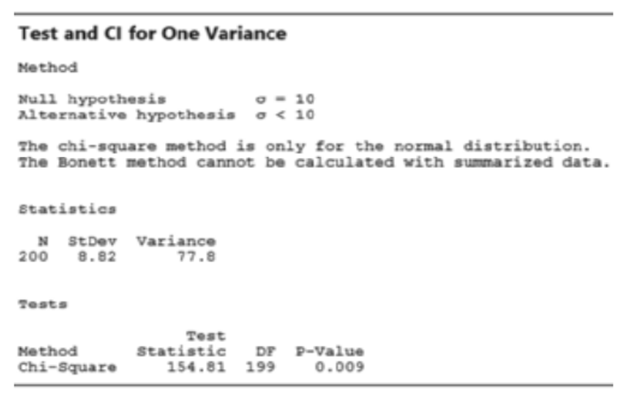Trading skills of institutional investors. Refer to The Journal of Finance (April 2011) analysis of trading skills of institutional investors, Exercise 7.36 (p. 410). Recall that the study focused on “round-trip” trades, i.e., trades in which the same stock was both bought and sold in the same quarter. In a random sample of 200 round-trip trades made by institutional investors, the sample standard deviation of the rates of return was 8.82%. One property of a consistent performance of institutional investors is a small variance in the rates of return of round-trip trades, say, a standard deviation of less than 10%.
a. Specify the null and alternative hypotheses for determining whether the population of institutional investors performs consistently.
b. Find the rejection region for the test using
c. Interpret the value of in the words of the problem.
d. A Minitab printout of the analysis is shown (next column). Locate the test statistic and on the printout.
e. Give the appropriate conclusion in the words of the problem.
f. What assumptions about the data are required for the inference to be valid?



